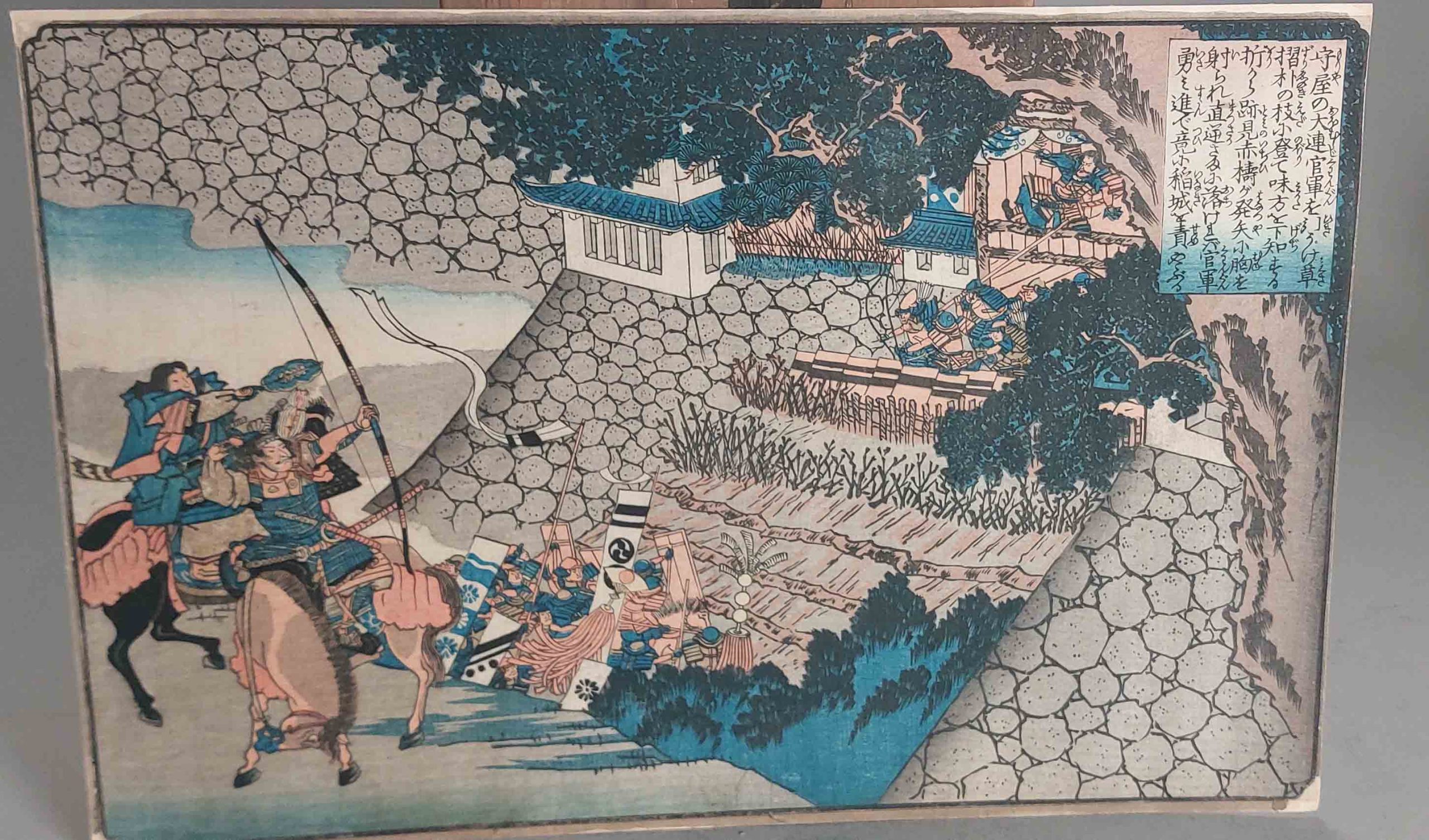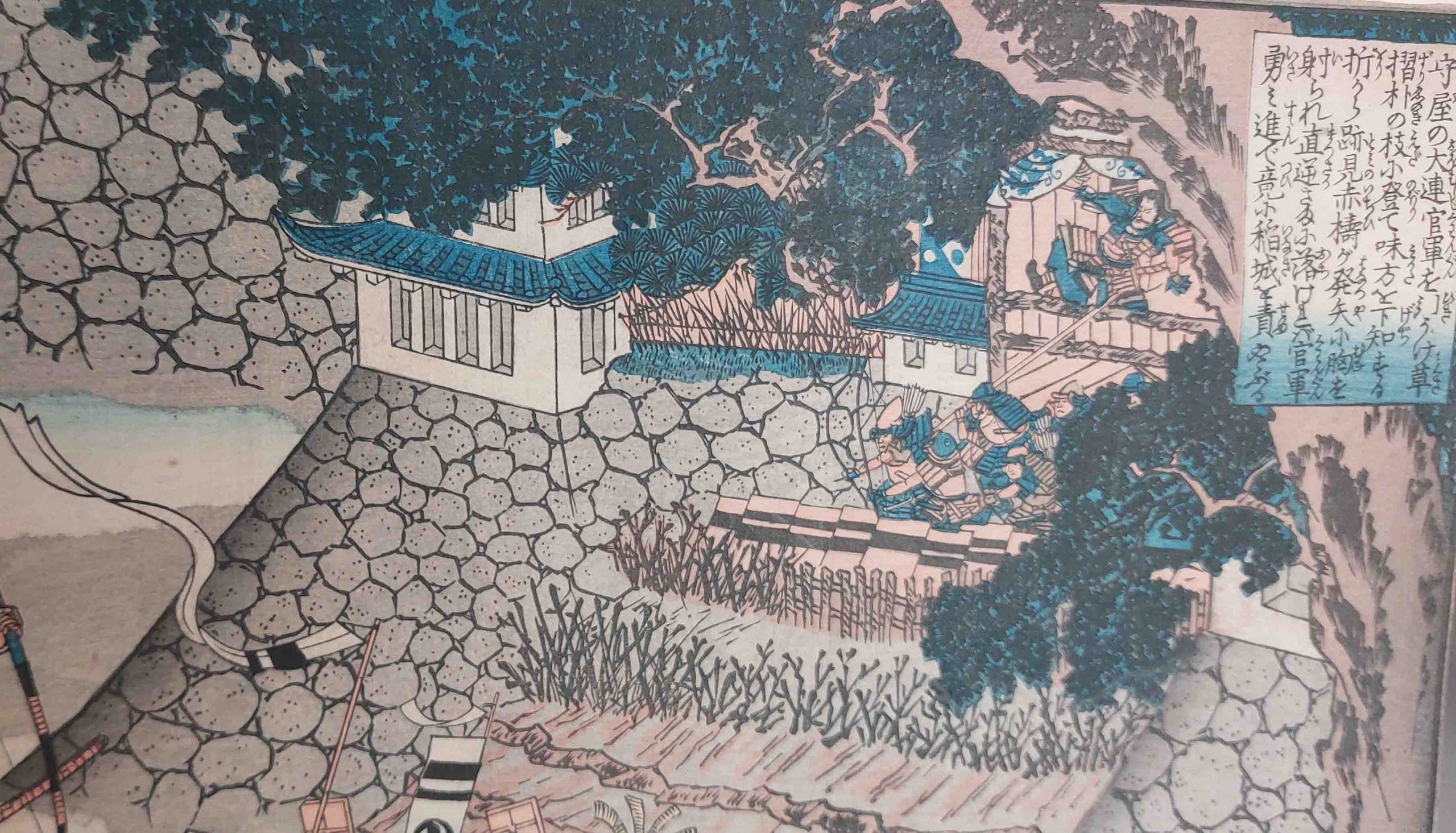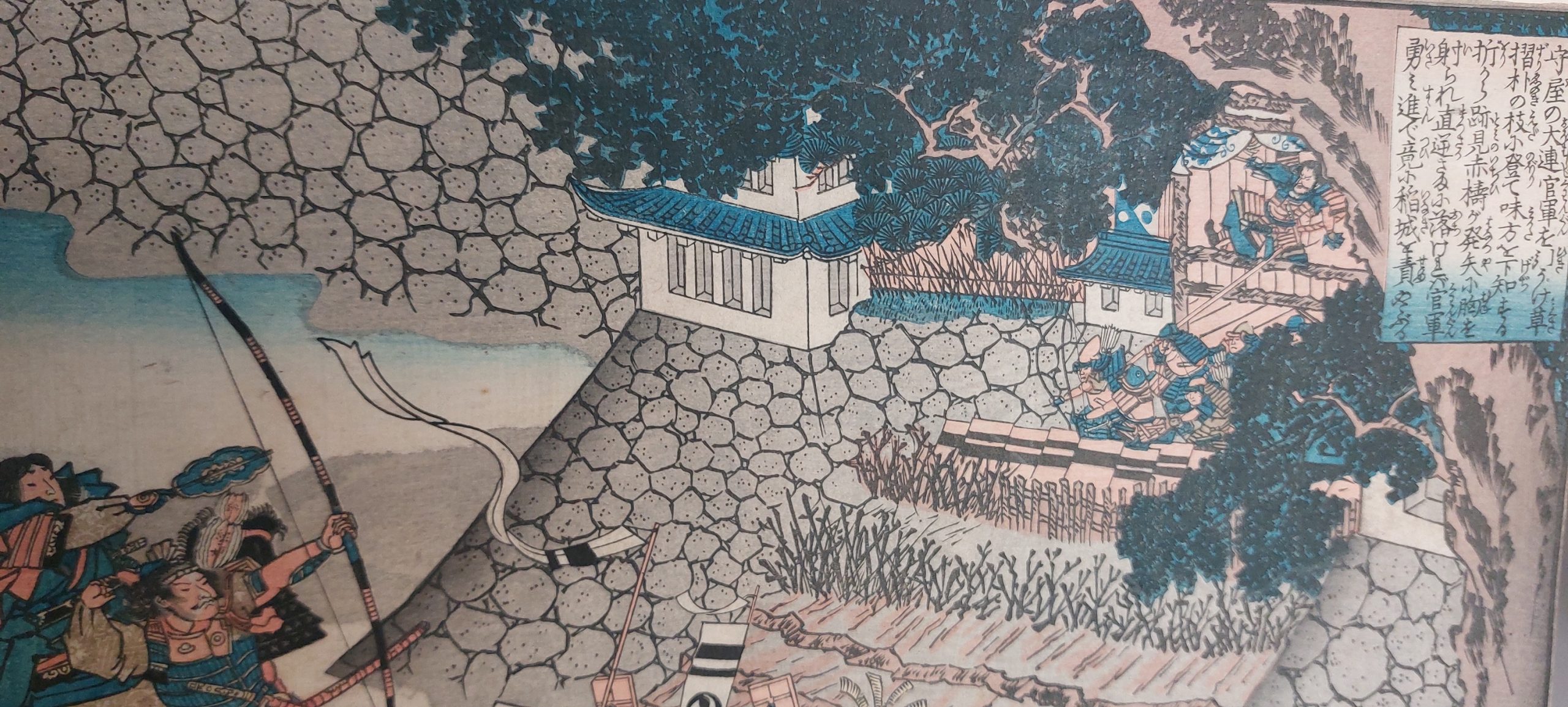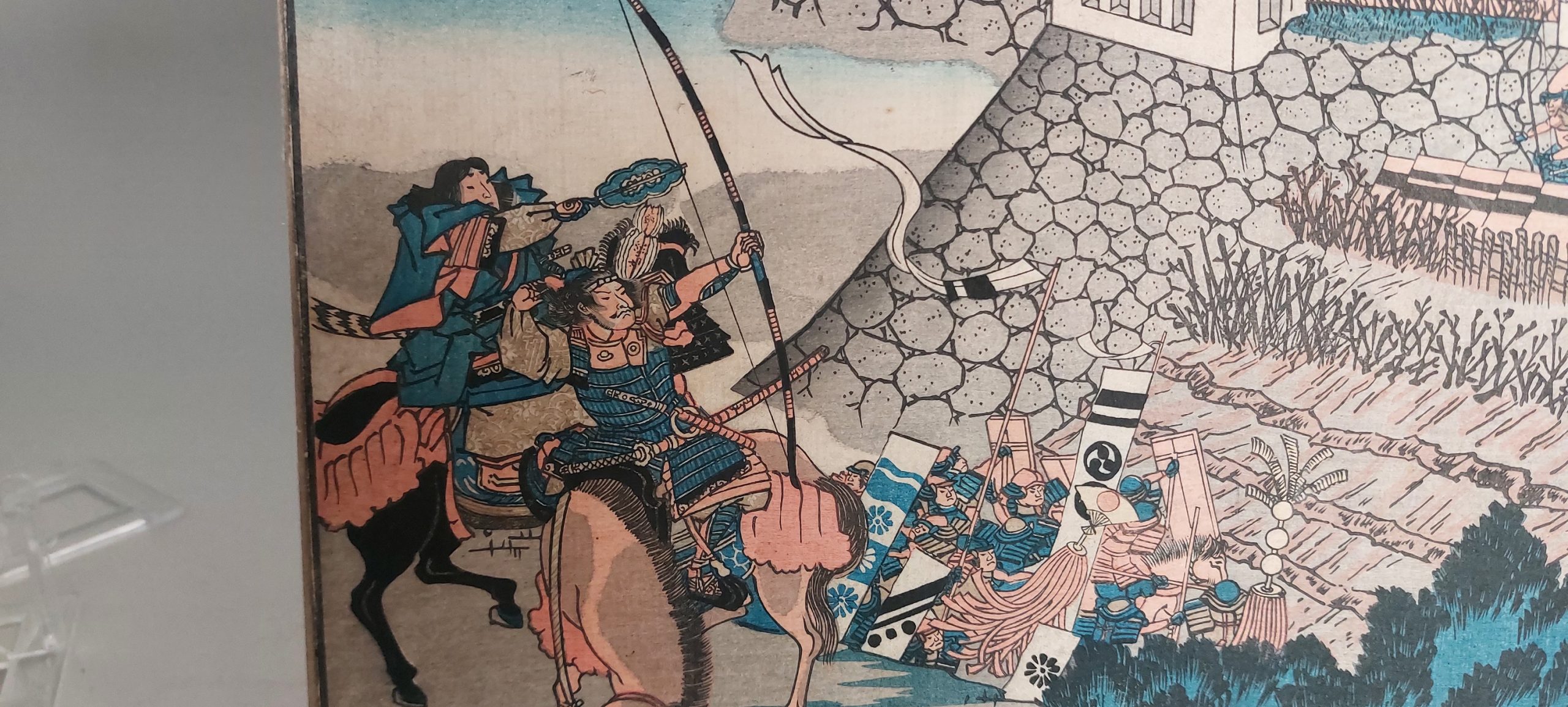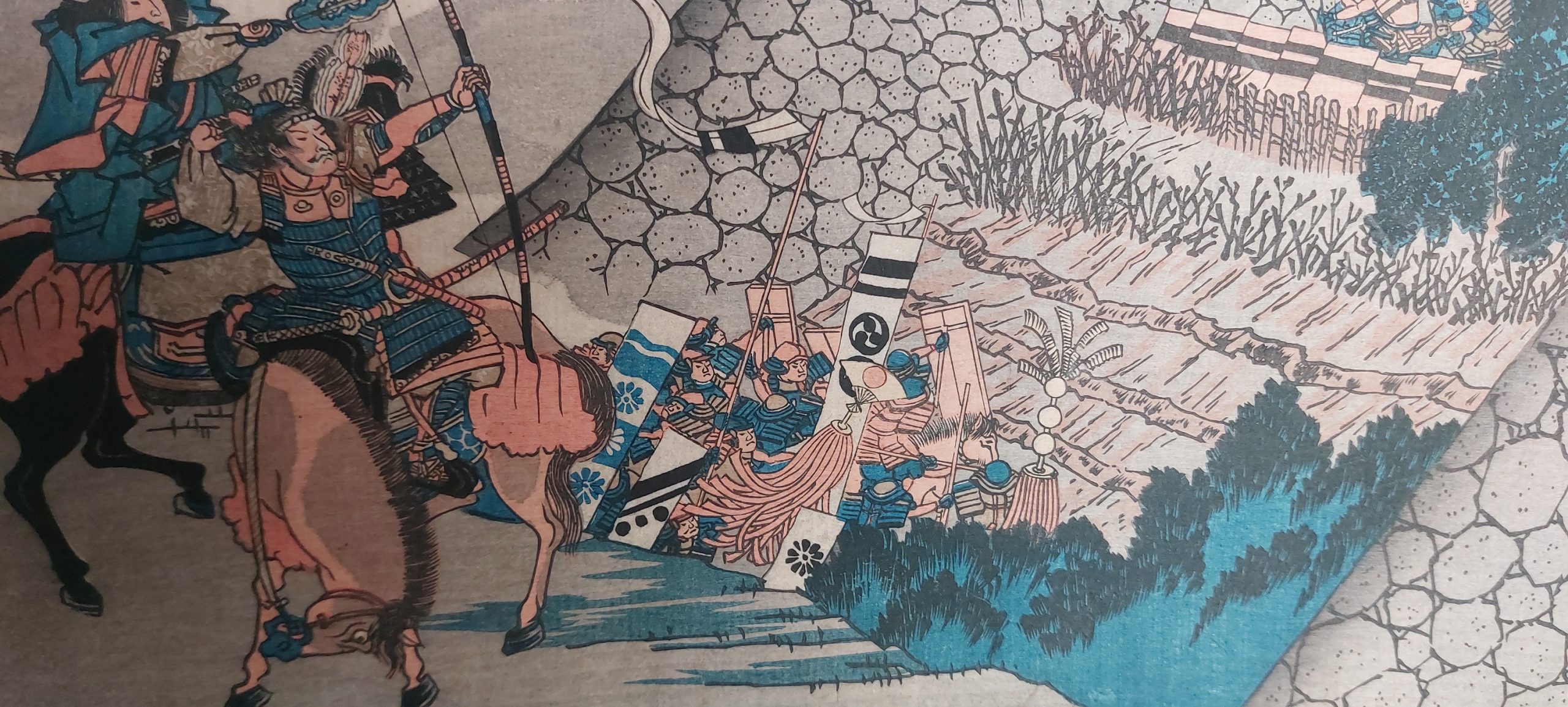Antique Woodblock Print Ukiyo-e Utagawa Kuniyoshi Prince Shôtoku attack on Moriya’s castle
In stock
Condition Report: Good condition, but mounted on a paper. Size 35.2 x 32.8
A lovely figural print by
Print artist. Pupil of Utagawa Toyokuni. One of the three principal ‘Ukiyo-e’ artists of the late Edo period, together with Kunisada (Toyokuni III) and Hiroshige, Kuniyoshi is particularly noted for his warrior prints and prints of bizarre and comic subjects. He also did fine Western-style landscape prints during the 1830s and early 40s. Kuniyoshi had an extremely fertile imagination and produced a steady stream of novel innovations: he served as a source of vital energy in the late ‘Ukiyo-e’ world.
Shotoku Taishi go-ichidaiki 聖徳太子御一代記 (Biography of Prince Shotoku)
Biography of Prince Shôtoku
(Shôtoku Taishi go-ichidaiki, 聖徳太子御一代記)
Publisher: Jôshû-ya Jûzô
1840
| Prince Shôtoku (574 – 622) was an imperial prince of the Yamato court of Japan. He served as regent for his aunt, Empress Suiko, who ruled from 592 to 628. Shôtoku’s most important domestic achievements were the establishment of a system of twelve court ranks in 603 and a seventeen-article constitution in 604. The constitution established a centralized government run by those who had merit, rather than those with inherited positions. The prince’s chief achievement in foreign relations was the opening of relations with the Sui dynasty (581–618) of China. Japan’s relationship to China had been that of a tributary state. Prince Shôtoku changed the relationship to one of equals, supposedly shocking the Chinese emperor by addressing him as the ruler of the nation “where the sun sets,” while Japan was the nation “where the sun rises.” Prince Shôtoku also declared Buddhism the official religion of Japan, and several miracles have been ascribed to him. The prints in this series are each about 10 by 14 inches (25 by 36 centimeters), a size known as ôban. |
Additional Information
| Weight | 4 kg |
|---|---|
| Type | |
| Region of Origin | |
| Primary Material | |
| Century | 19th century |
| Category | Polychrome |
| Material | Paper |
| Condition Report | Good condition, but mounted on a paper. Size 35.2 x 32.8 |
